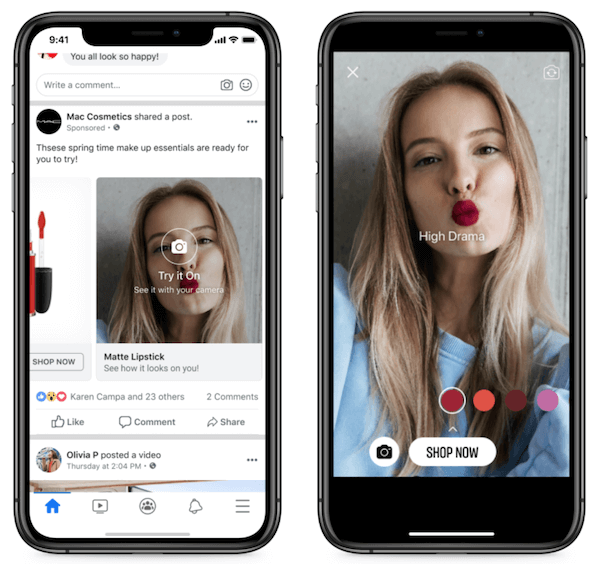
The notion of marketing was first introduced to commerce in the late 19th century and for more than a century, it was ok using it to describe the process of connecting products and services with their end users. But in 2010 Sean Ellis, one of Dropbox’s marketers, coined the term “growth hacking” to identify marketing techniques whose sole purpose was to pump the company’s sales as fast and efficiently as possible.
Featured Growth Marketing Agencies
In early 2000, unlike traditional businesses that could take years and decades to grow, IT companies proved capable of explosive growth within months. So the need to capture this fast development led to the born of the Growth Marketing notion.
Fuel Your Business, Ignite Your Growth!
Join leading brands like Google, Reddit, and Uber in taking the next step towards success using Moburst, and spark enthusiasm for your product among users!
Claim Your FREE Review NowIn this article, we will dissect growth marketing strategies that have been powering the financial success of many prominent mobile apps. Keep in mind that all these practices can be attributed to mobile marketing in general, essentially by naming it a growth marketing strategy we stress the common theme behind all these strategies – a laser focus on fast growth.
First up is one of the most widespread strategies – Performance Marketing.
Performance Marketing
Performance marketing is one of the forms of digital marketing where marketing service platforms are paid by advertisers for achieving their specific goals, such as a click on an ad, a registration, a sale, a subscription to a service, and other business goals advertisers may have. In today’s digital marketing landscape, there is a number of different performance marketing kinds marketing channel-wise, namely – Search performance marketing, Social performance marketing, Email performance marketing, Affiliate performance marketing, and Display performance marketing.
Pros
- From advertisers’ perspective, there is a clear benefit – they only pay when they fulfill a specific goal it’s possible to calculate ROAS.
- Thanks to robust ad campaign analytics, performance marketing delivers advertisers transparency and control over the efficiency of their advertising budget spend.
- Performance marketing platforms provide businesses with a number of tools to vary the reach of their ad campaigns and ability to reach specific demographics
Cons
- Thanks to the same factors that we attribute to the performance marketing upside, it can be expensive
- No matter what kind of performance marketing is in point, it requires an expert to make it efficient and economically-wise
Some of the classic examples of a performance marketing strategy implementation could be setting up a paid user acquisition campaign on Google Ads, Facebook Ads, TikTok Ads, or other digital advertising platforms.
Facebook Ads advertisement
Source: Wordstream
Switching from top digital advertising platforms as a vehicle for a performance marketing campaign to another growth marketing strategy, which is setting so-called SMART goals for the app’s growth strategy.
One thing to remember about SMART goals is that by definition they are very mobile app specific, this is not a single template that fits them all.
SMART Goals
SMART goals are goals that are specific, measurable, achievable, relevant, and time-bound. Let’s unpack all components of this acronym, starting with Specific. To achieve quick and sustainable growth, the app marketing goals have to be very specific and well-defined. Because the app’s growth is highly dependent on funding, it is crucial to have its growth marketing goals to be measurable. It’s impossible to allocate the app’s marketing budget efficiently if its growth isn’t measured precisely.
App marketers should always be realistic when they set growth goals for the app, the expectations should always be grounded in what is achievable for the app. It is common sense but still bears to be repeated – the app’s growth goals need to be relevant to the business and its objectives. And finally, by time-bound we mean the goals should have a timeline and a deadline to meet.
Pros
- Setting up SMART goals allow app brands to have a realistic and comprehensive picture of the app’s growth
- When certain SMART goals aren’t on track to be achieved as it was pre-planned, it is clear what part of the app growth strategy needs to be adjusted
Cons
- As much as it is desirable for the app to follow the trajectory set by these SMART goals, in real life there is always an element of unpredictability that is impossible to foresee.
One of the most common examples of a SMART goal is defining the CAC (stands for Customer Acquisition Cost) metric value to be able to define ROI for the app.
Moving on from anchoring an app’s growth marketing strategy to SMART goals to apply Social Media marketing as a vehicle for the app’s growth.
Influencer & SM Marketing
Since their inception in the first decade of the 21st century, social media platforms have been the best growth driver for businesses online. Once the mobile took off in 2007, advertising on Facebook, Twitter, Instagram, and lately TikTok, has become a part and parcel of the mobile app growth strategies toolbox. For years, social media sites continue to be the most desirable place where people spend the bulk of their online time, hence social media efficiency in driving the mobile app’s growth. Influencer marketing is one of the social media marketing facets, where people with big influence over large audiences generate interest in a product or service and increase sales. Applying Influencer marketing to a mobile app growth, app marketers can acquire more users for the app and, given the emotional attachment between influencers and their followers, get loyal app users.
Pros
- Allows to meet mobile app users where they spend time online and introduce the app
- Find the moments when mobile app users will be more receptive, given a specific context, to messaging about the app
- Reaching large audiences at the time and with the right frequency
Cons
- In some instances, like with the current state of affairs with Twitter Ads, app brands’ safety isn’t guaranteed, there is always a possibility of the app brand’s being displayed right next to a questionable content
A big portion of the mobile ads on Facebook Ads, TikTok Ads, Twitter Ads, and other major digital ad platforms advertise mobile apps. Among those are games, financial, health & fitness, and retail e-commerce apps.
Moving on, switching from securing growth for mobile apps via social media platforms and influencers to in-app referral programs.
In-app referrals & Incentives
One of the most powerful growth marketing strategies is in-app referrals that allow the app users to share the app they like with other people. It’s the tool that makes word of mouth actually work app marketing-wise, it drives the app’s native growth, allowing the app users themselves to market the app.
Pros
- One of the cheapest and the most cost-effective app growth marketing strategies
- Easy to implement and deploy in the app
Cons
- May not be applicable to kinds of mobile apps, if the app doesn’t provide value significantly greater than competitive apps it won’t get much of traction, and people won’t share it
The classic examples of apps with a built-in referral system are Dropbox, Uber, and Airbnb.
Transitioning from referral systems to tap word of mouth for a mobile app’s growth to content marketing, which has been one of the best growth marketing strategies and not only for mobile apps.
Content Marketing
From an app marketing perspective, the general principle of content marketing is to generate interest in the app(s) by publishing multiple articles that cover the topic(s) relevant to the app. This strategy includes both hosting a blog on the app’s website to cover the app and publishing articles on various publications directly and indirectly related to the app.
Pros
- Generation of both short and long-term interest in the app
- Telling a story of the team behind the app to help to build a loyal fanbase
Cons
- Time-consuming
- Requires story-telling & writing skills
The best application of content marketing as a growth marketing strategy is for mobile apps that have big user bases that actively interact with each other.
These are apps built for people who build a community around various hobbies like fishing (think FishBrain), hiking, running, collecting items, and more.
Customer Retention
All other growth marketing strategies listed in this article are devised to find new users for the app but the idea behind Customer Retention is to apply multiple strategies to keep those valuable app users gained with other strategies.
Throughout the app’s lifecycle, people who use the app may have many valid reasons to stop using the app, some of those simply can’t be addressed by app marketers, let’s focus on the ones they can. People may stop using the app because they don’t understand certain features inside the app because they’ve found a better alternative or simply because life got in the way and they’re focused on something else.
A push notification example for a mobile email client
Customer retention always starts with so-called smart onboarding when the app users are guided inside the app to get a crystal clear understanding of the app’s features. A set of comprehensive educational resources is a great tool to address any possible further questions the app users may have.
Push notifications are another communication tool to keep the app’s users informed about the app’s new features, promo actions, and location-based or timely messages to increase the app’s value.
And finally, robust app analytics is yet another component of a smart customer retention strategy. It’s impossible to have any control over the app’s growth without app analytics that provide information on the app’s users’ behavior, and the app’s performance on an app store and report on any possible technical glitches.
Pros
- According to multiple resources, it costs between 4 and 10 times more to acquire a new app user than it does to keep an existing one. Therefore custom retention strategy allows app marketers to solve the “leaking bucket” problems when the app’s sustainable growth is hindered by the users’ churn.
Cons
- In case when the app experience high users churn, the app marketing team may be too focused on the app users’ retention and pay less attention to acquiring new ones. Therefore a balance between customer retention and user acquisition growth strategies is always required.
Final Thoughts
In today’s highly competitive environment, where a combined effect of the post-COVID economy and recession taking a high toll on app brands, knowing well and actually putting into practice a number of growth marketing strategies is a must. The quick rising of ChatGPT which took everybody by surprise both opens up new opportunities and brings new challenges to app marketers. We hope the above listed strategies will help you to growth your apps more efficiently and beat your competition.




